Cassareep is a reduction sauce made from cassava extract (cassava juice). It is thick, smooth with a slight glossiness. It has a slight cassava taste, a little sweetness and the faintest hint of bitterness. This essential ingredient is the base of traditional Guyanese recipes like Pepperpot, the national dish of Guyana. With this guide, you’ll learn how to choose the best commercial cassareep and how to make it at home (if you want to give it a try).
While you’re here, check out my 5 Must Try Guyanese Foods.
What is Cassareep?
Cassareep is a syrup derived from bitter cassava, a root vegetable native to South America. It has a unique flavor and is used primarily in Guyanese Cuisine. Known for its complex rich taste, signature black color and preservative qualities, it enhances many recipes.
- What is Cassareep?
- Cassava Work
- How to make Cassareep
- From Cassava Water to Cassareep
- How to Use Cassareep
- How to Choose the Best Cassareep for Pepperpot:
- Some commercial cassareep brands I recommend:
- Pomeroon Cassareep
- Is cassareep safe to eat?
- What does cassareep taste like?
- Ingredients for Cassareep
- How to Make Cassareep at Home
- Recipes that Use Cassareep
- Storage
- Tips
- Frequently Asked Questions
- Cassareep
The process of making cassareep is a long and tedious one with a low yield, therefore not many people attempt to do this at home. Most Guyanese people in Guyana and the diaspora buy cassareep directly from vendors in Guyana. It typically comes in an unlabeled plastic bottle being upcycled e.g. a 2 liter plastic coca-cola bottle.
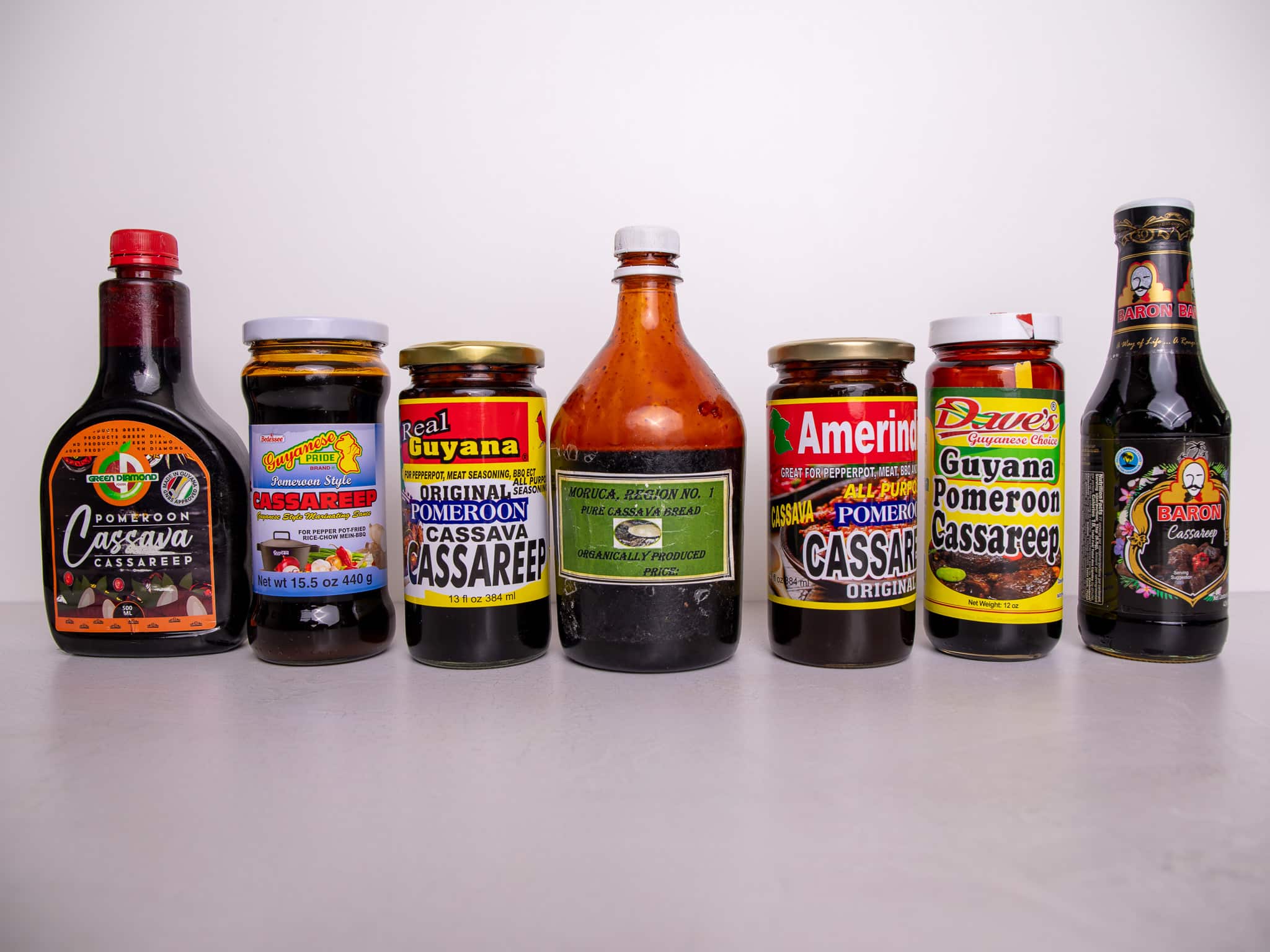
Cassava Work
In Guyana, cassareep is a small batch, artisan process and it is made exclusively in indigenous communities. For Amerindians in Guyana working with cassava is is a zero-waste process. The extracted juice is used to make cassava water for tuma or boiled down further to make cassareep. The cassava starch is used to make tapioca starch and tapioca pearls and the dried cassava husk is used to make farine, cassava bread or parakari (a local alcoholic drink).
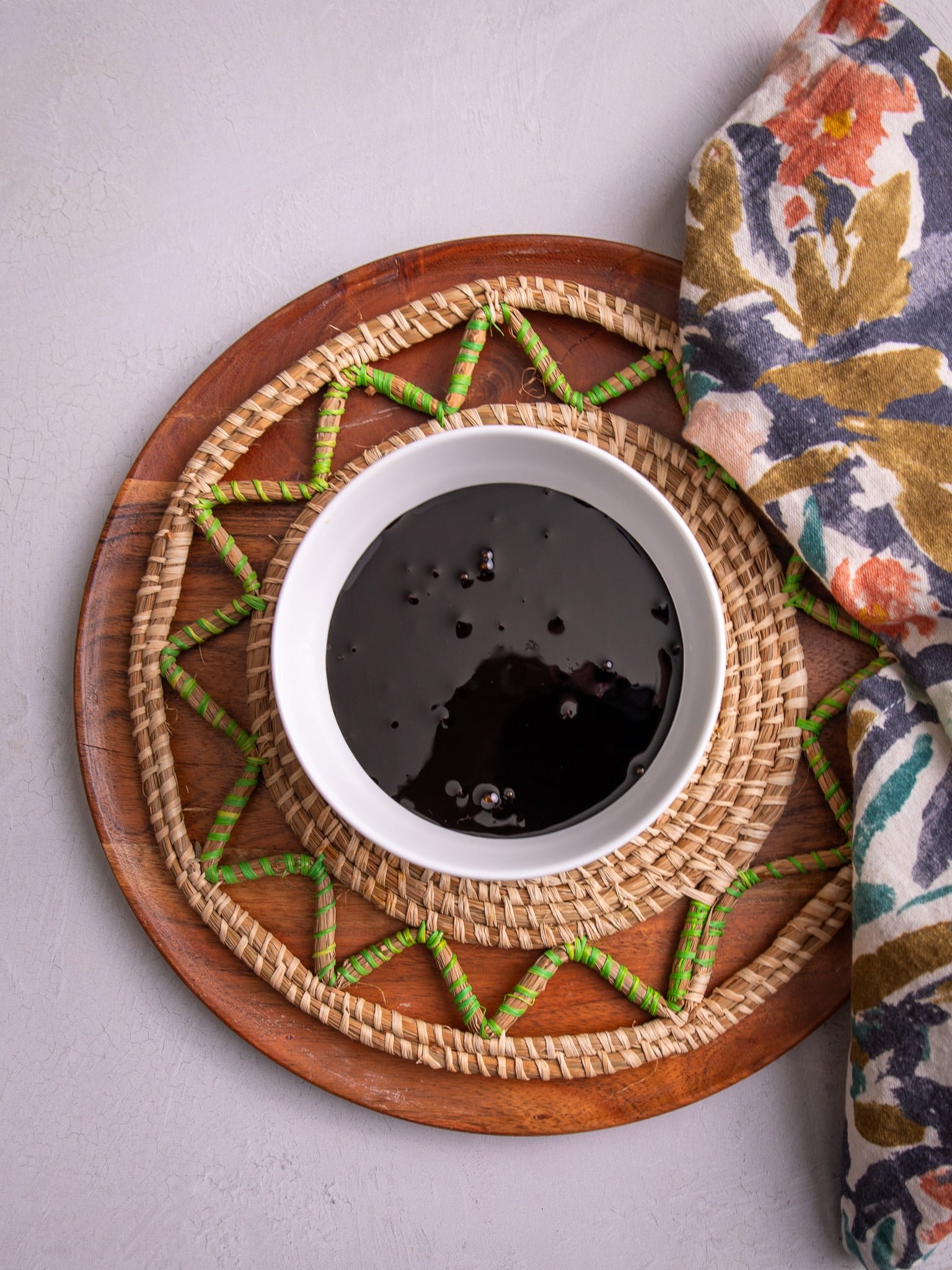
How to make Cassareep
Cassareep is made with the juice from bitter cassava. The first step in making cassareep is the peel and grate the cassava. The thin skinned bitter cassava is scrapped clean, then grated. The traditional cassava grater is handmade from wood and embedded with sharp metal pieces or nails. The grated cassava is then added to a matapee (a woven basket used to extract cassava juice) and all of the juices are extracted into a basin below.
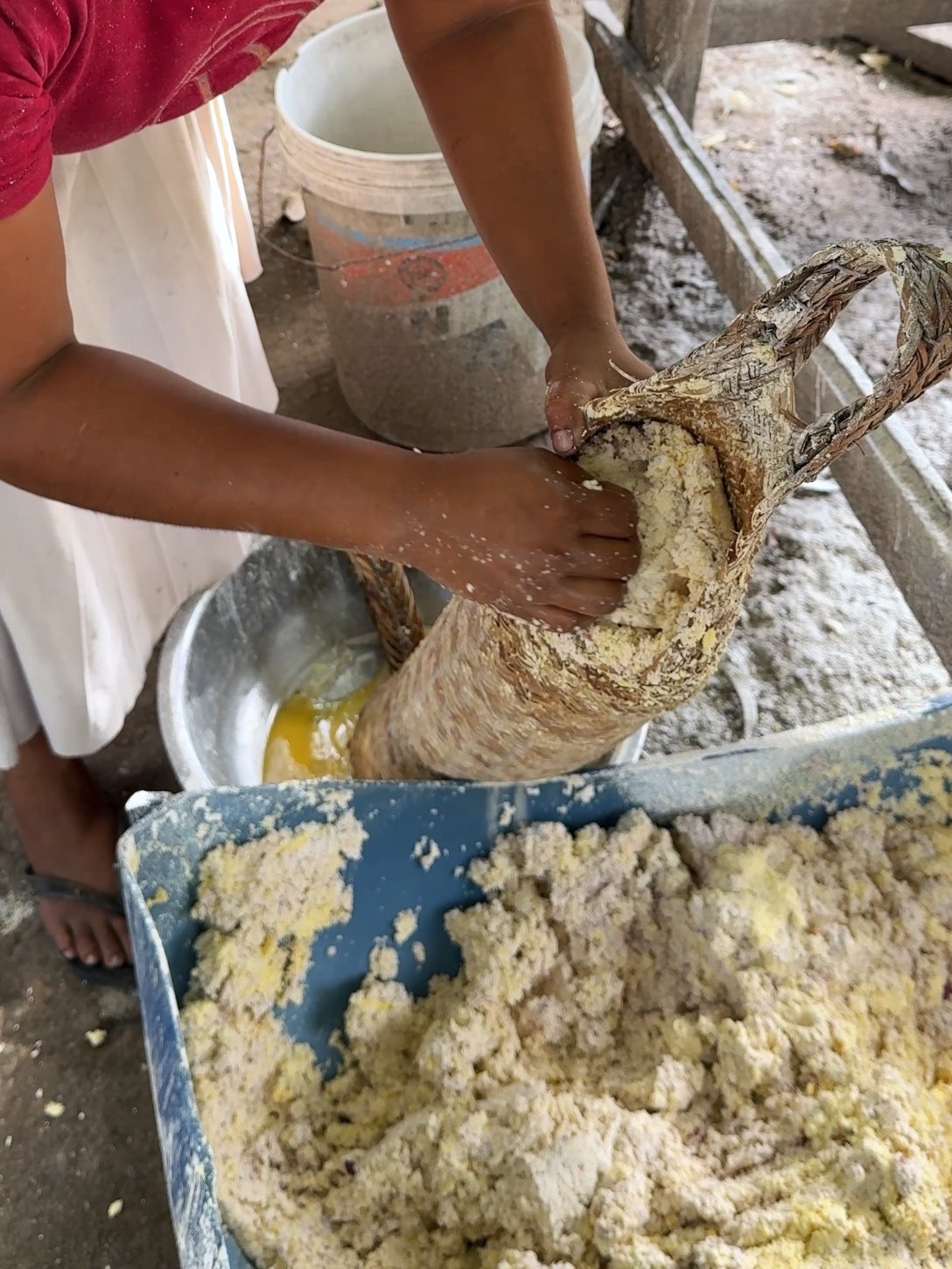
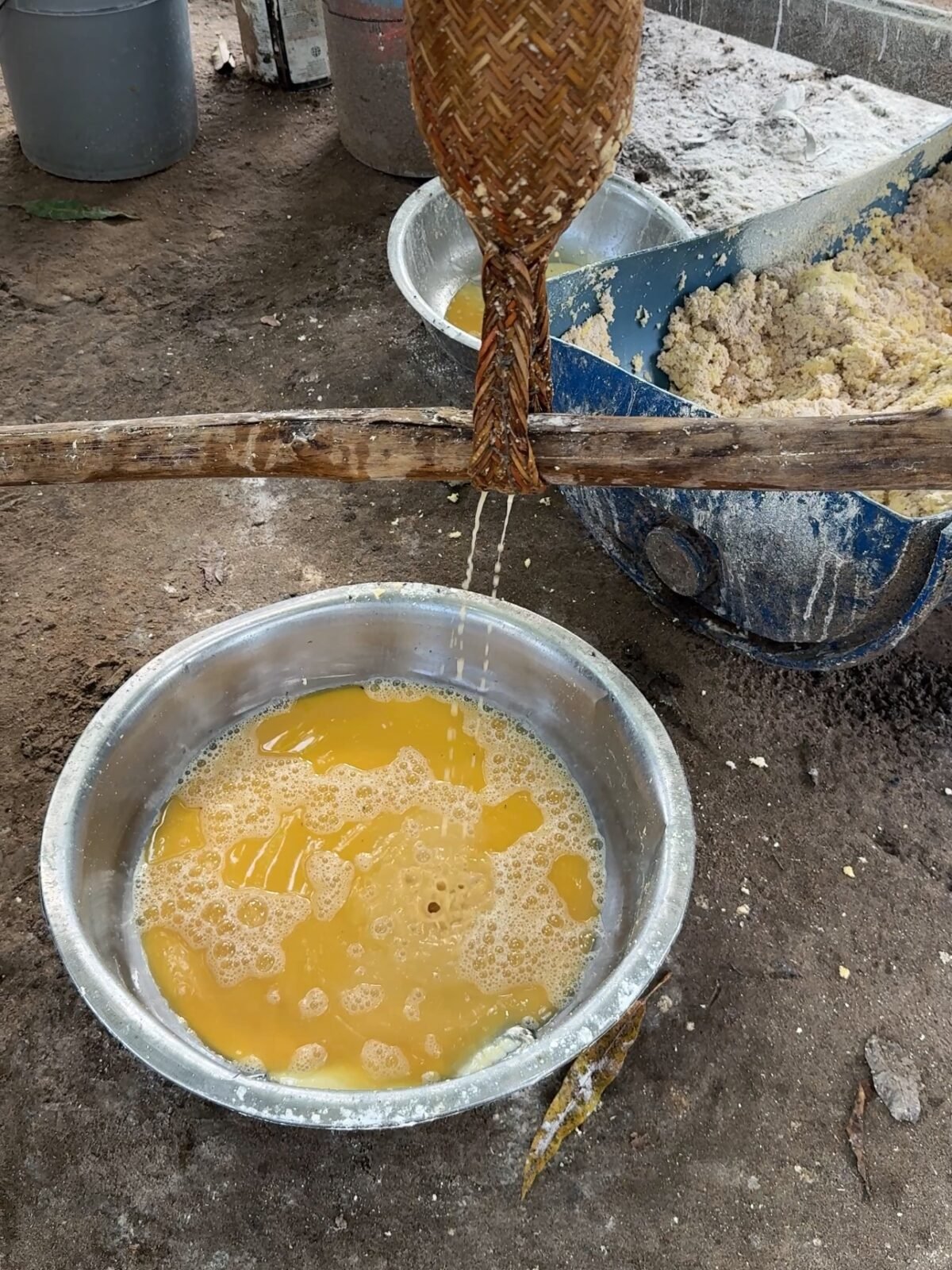
Making Cassava Water
The cassava juice sits for an hour or two until all of the starch settles to the bottom. Then the juice is transferred to a pot and brought to a boil. At first the liquid is cream colored and murky. After about 2 hours of boiling it will become translucent with visible solids. At this point the cassava water is no longer poisonous and safe for human consumption. It is perfect for tuma.
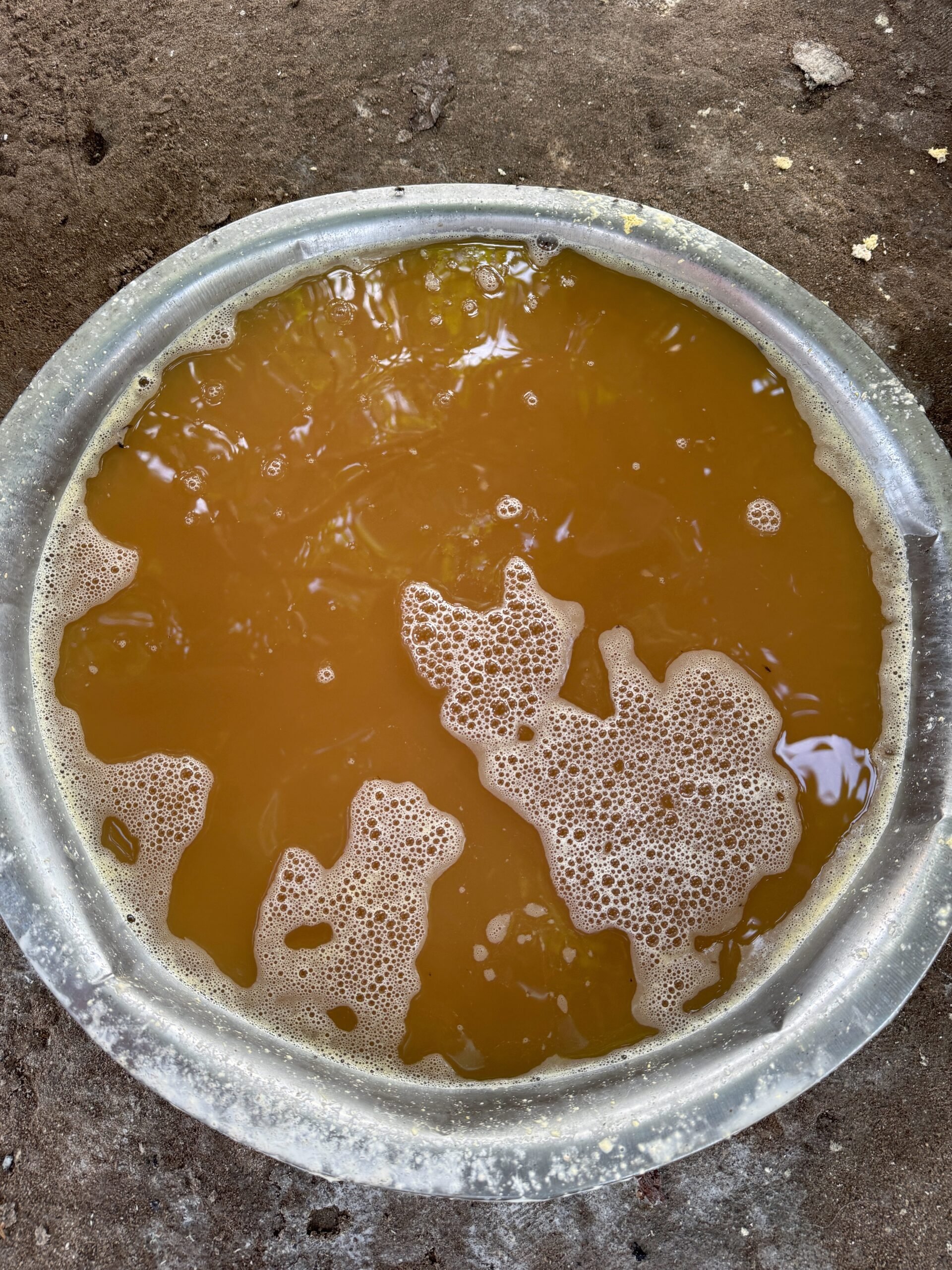
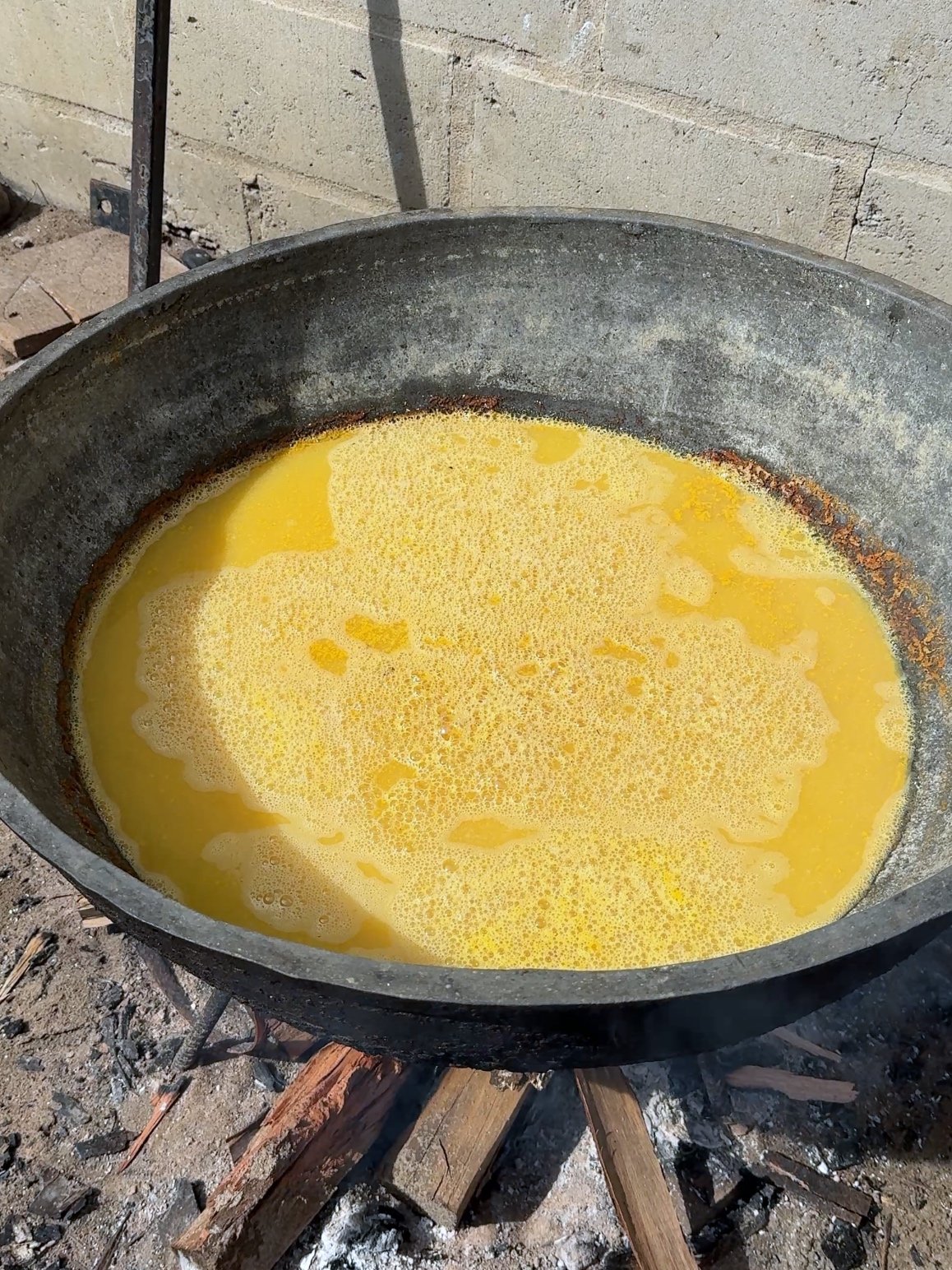
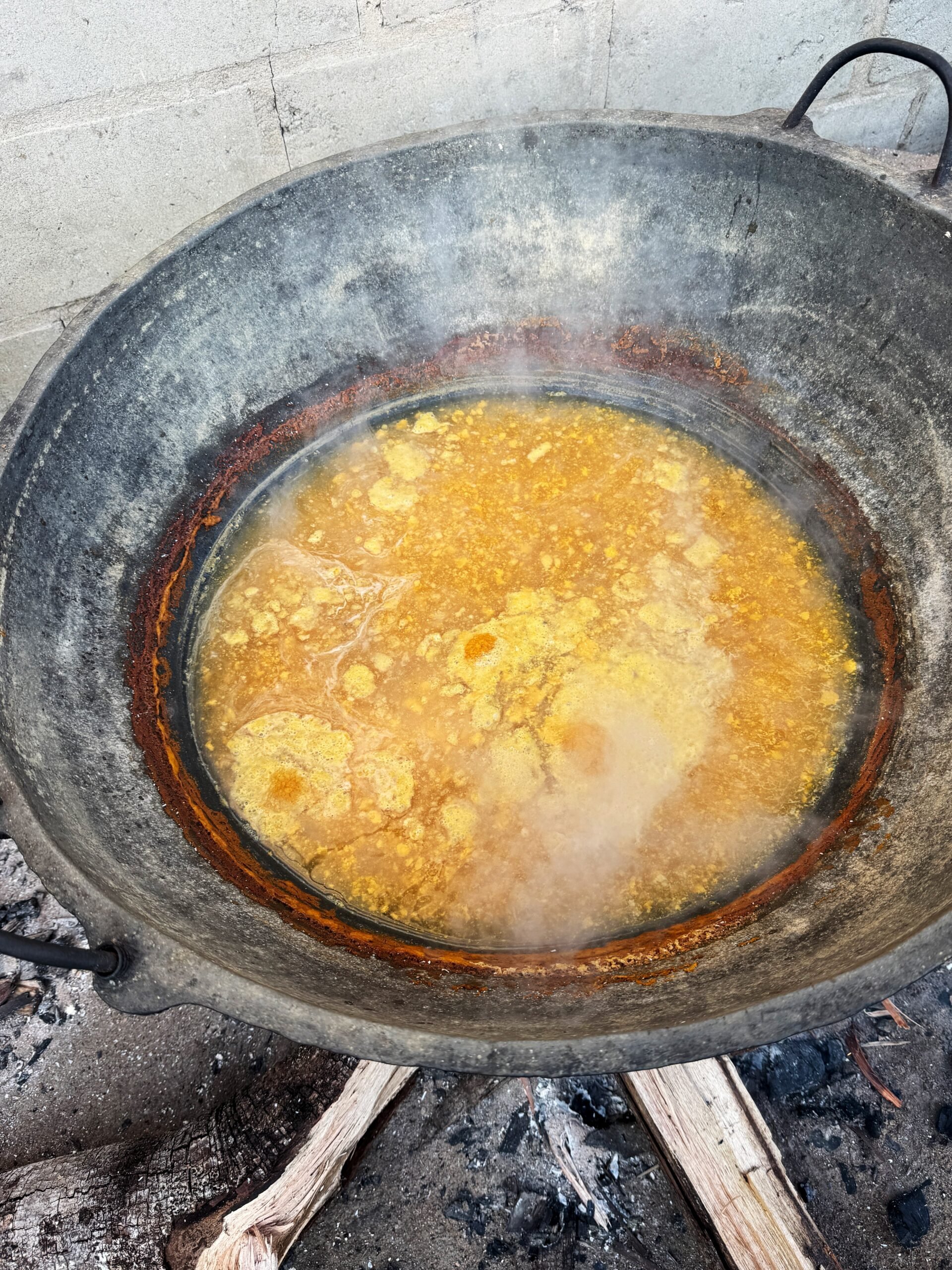
From Cassava Water to Cassareep
Most villagers use cassava water, more than the black cassareep and therefore will stop cooking when they get to this stage. To take the cassava water to cassareep stage, we must first allow the water to cool completely, then strain all of the solid bits off. The liquid is returned to a clean pot and boiled for another two hours until it reduces down, thickens and becomes the black cassareep.
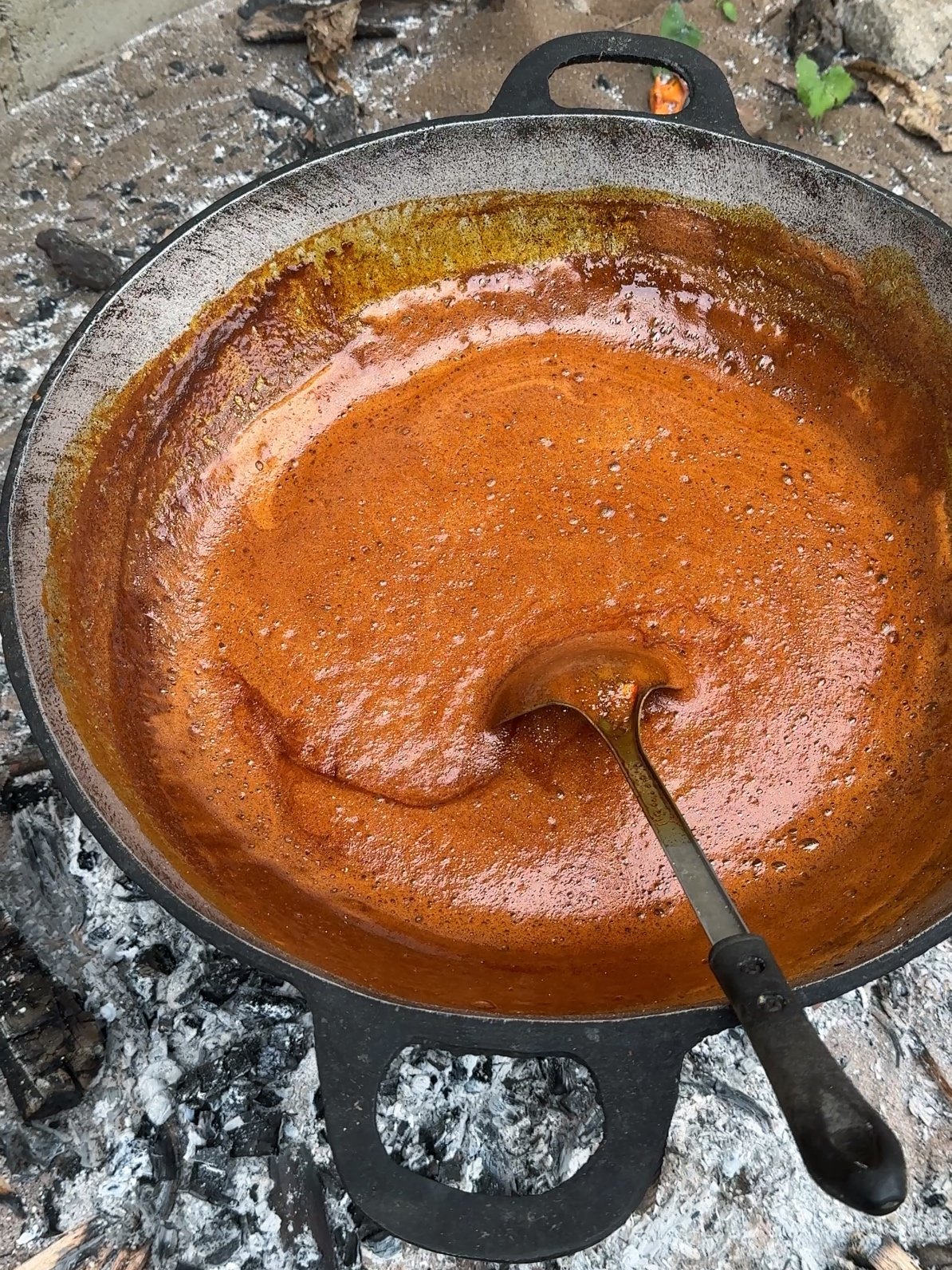
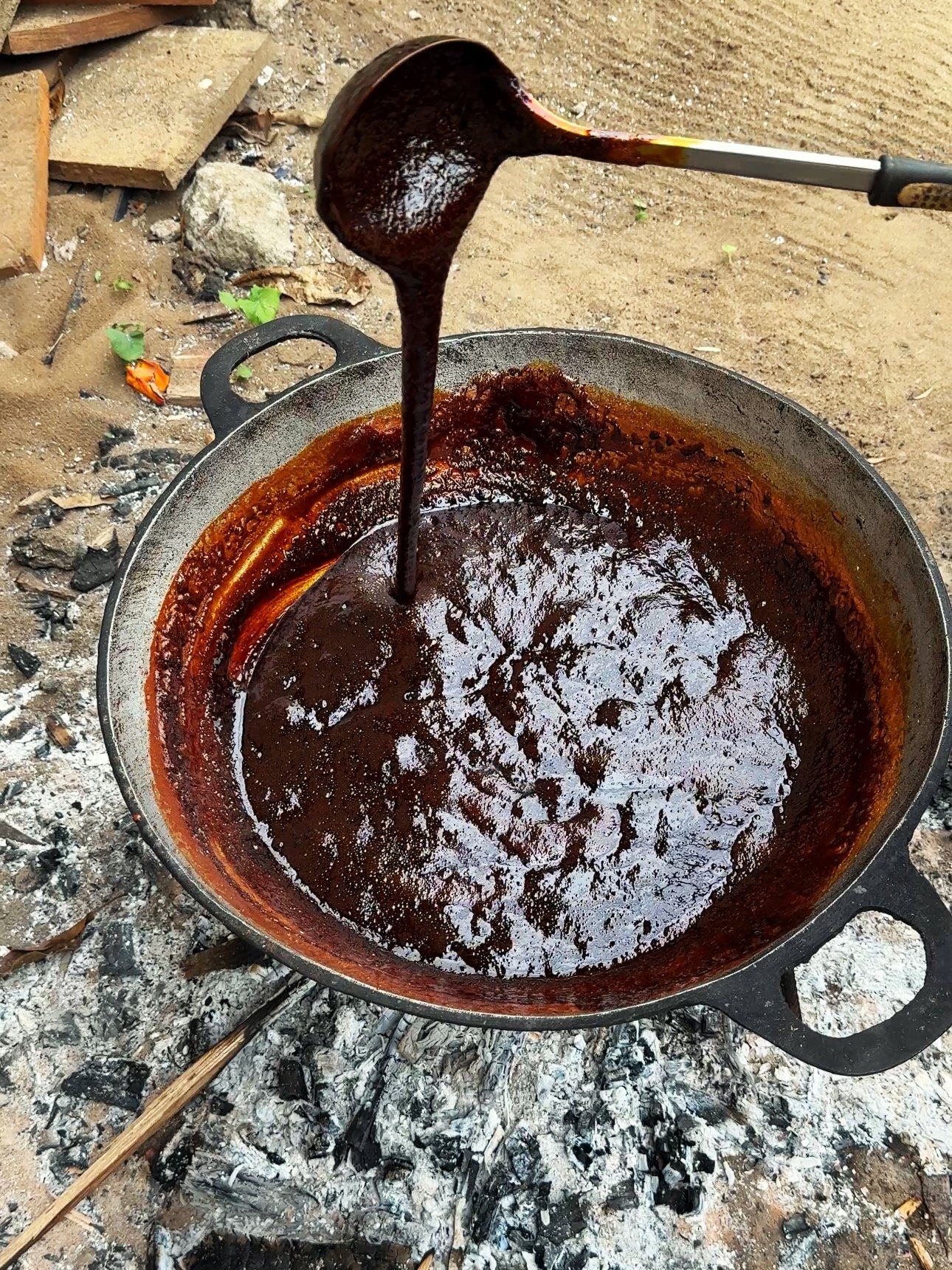
Enjoy this video of cassareep making in Guyana.
How to Use Cassareep
- Seasoning: It adds a distinct flavor to dishes, providing a deep, rich taste that enhances traditional recipes like Pepperpot.
- Browning Agent: In addition to flavor, this sauce acts as a natural browning agent, giving dishes a dark color and a complex flavor profile.
- Preservative: Historically, cassareep was used by Indigenous tribes to preserve meats. Its high acidity helps to inhibit bacterial growth, making it an effective natural preservative.
How to Choose the Best Cassareep for Pepperpot:
- The best cassareep is 100% cassava extract with no additives. Most Guyanese people get this directly from Guyana and the most popular place to get it in Guyana is Pomeroon (See below for more about this). Although you can get good cassareep from any indigenous community from Mabaruma in Region 1 to Lethem in region 9 and all the communities in between.
- I buy my cassareep from the Ministry of Amerindian Affairs in Guyana. They work closely with indigenous communities and bring cassareep down to Georgetown for resale. It is then bottled and sold directly from their main office on Quamina and Thomas Streets.
- Most commercial varieties includes additives like burnt sugar (listed as sugar caramel on the label). Some also include spices and aromatics. These additives dilute the liquid and impact the taste of your dish, particularly when used for Pepperpot. Some people love the cassareep with all of the additives. I do not. Pure cassareep lasts longer and gives more flexibility for flavor development.
Some commercial cassareep brands I recommend:
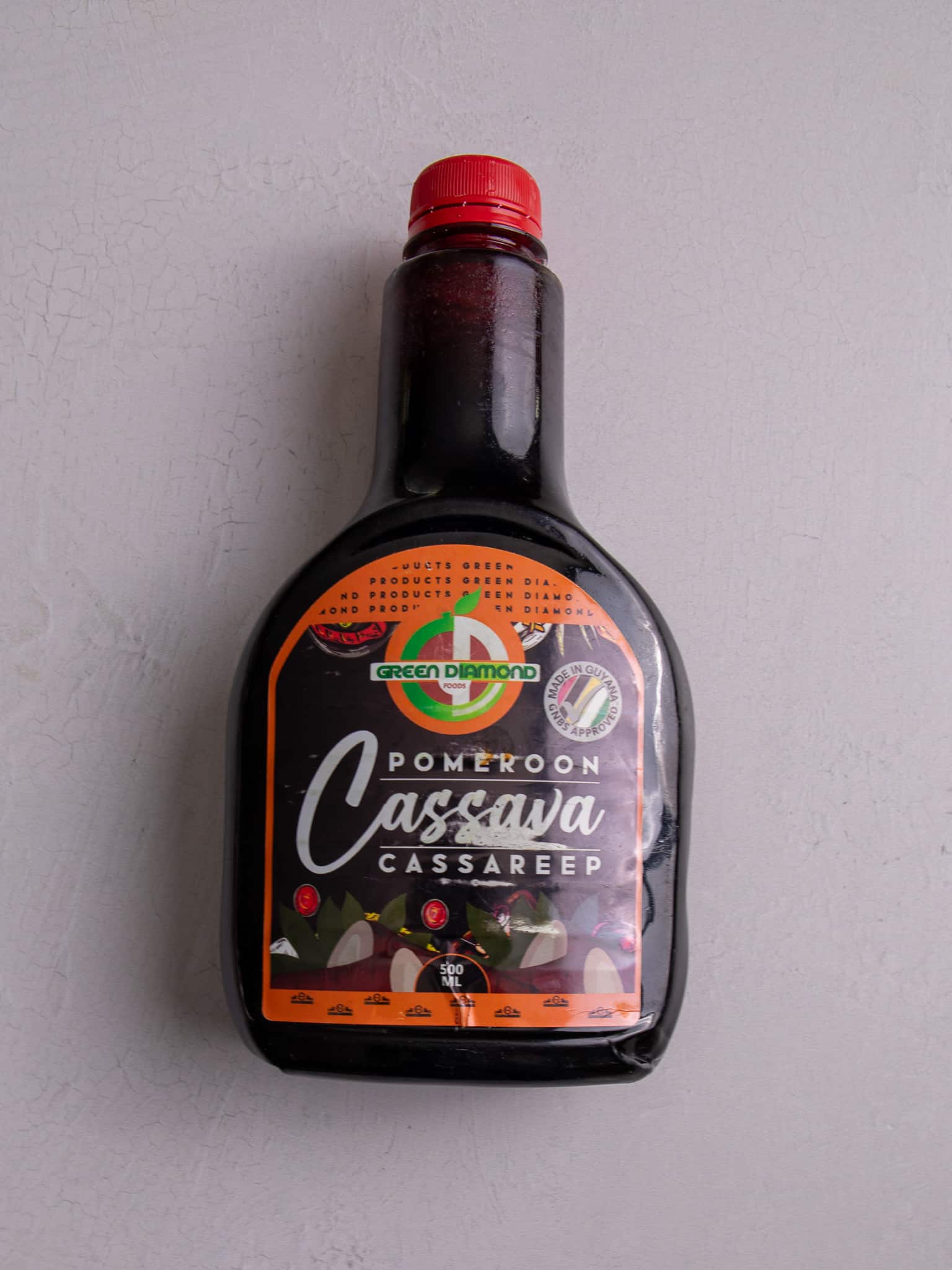
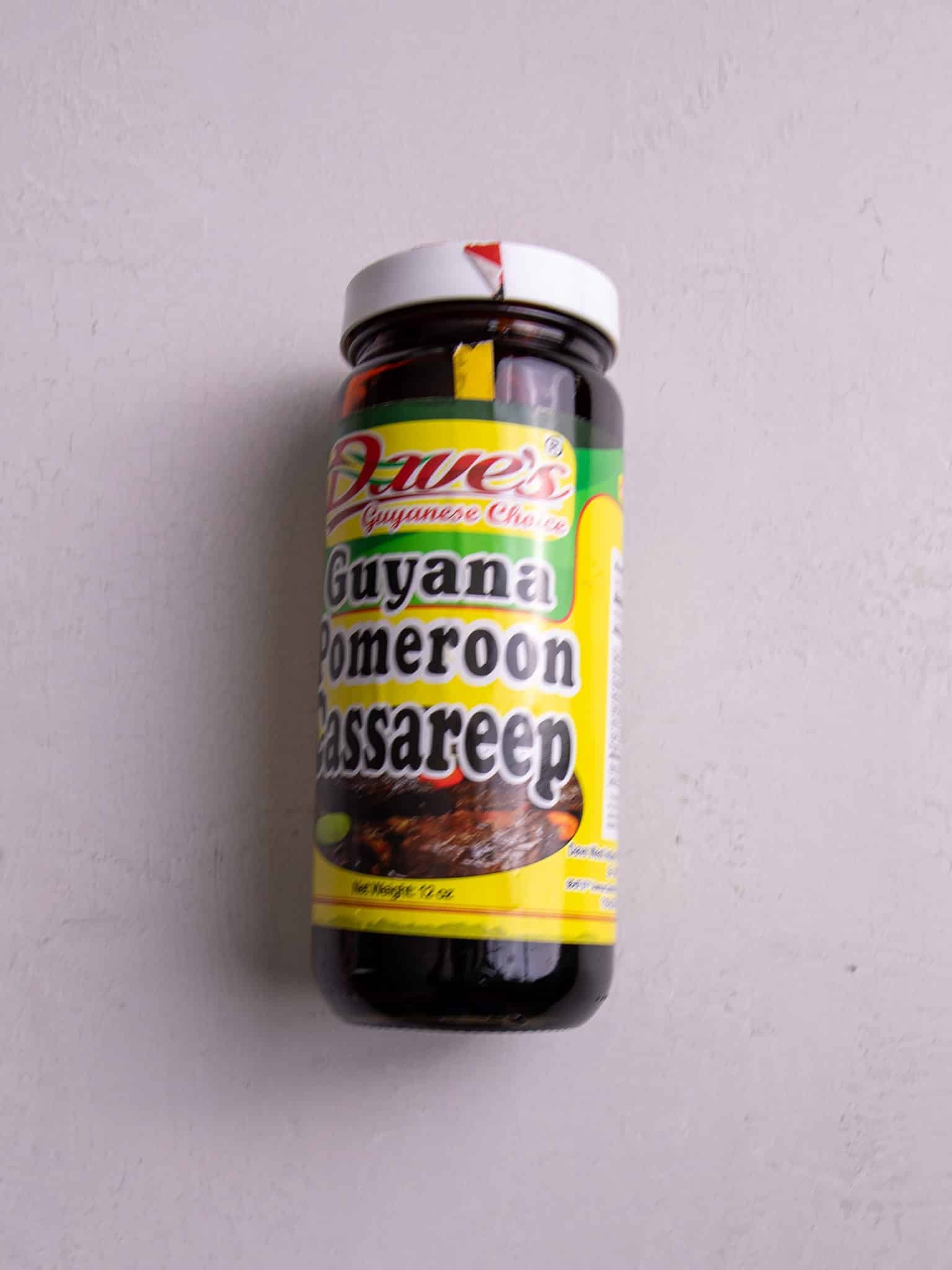
- Moruca Cassareep: This cassareep is sold exclusively by the Ministry of Ameridian Affairs and it is the best I’ve ever had, except for the one I made while visiting a Apoteri in the Rupununi. It is rich, deep with a slight tangy taste and subtle underlying bitterness. A little goes a long way with this brand. I love the rich dark pepperpot I get when I use this.
- Green Diamond: This is a single ingredient product that comes from the Pomeroon region in Guyana. It is thick and rich but has a really bitter taste. I was confused by this bitterness and thought that perhaps it has burnt sugar, but the label says just cassava extract.
- Dave’s: This is a mixture of cassareep, burnt sugar and spices. It is thick and a good alternative on the market if you cannot get cassareep directly from Guyana. You will need an entire jar for a decent batch of Pepperpot and to add a bit more sugar since it has an overpowering bitterness from the burnt sugar.
Pomeroon Cassareep
Pomeroon, Region 1 historically was the easiest place to get cassareep from in Guyana. It’s proximity to Georgetown made it accessible and many people from Indigenous communities made their way to local markets to sell their cassareep. Therefore Pomeroon cassareep became the standard for good cassareep.
Today you can get cassareep from many other regions in Guyana. However, commercial vendors use the Pomeroon to lure buyers into thinking their product is authentic. Be on the alert for this when buying cassareep, especially those exported to North America.
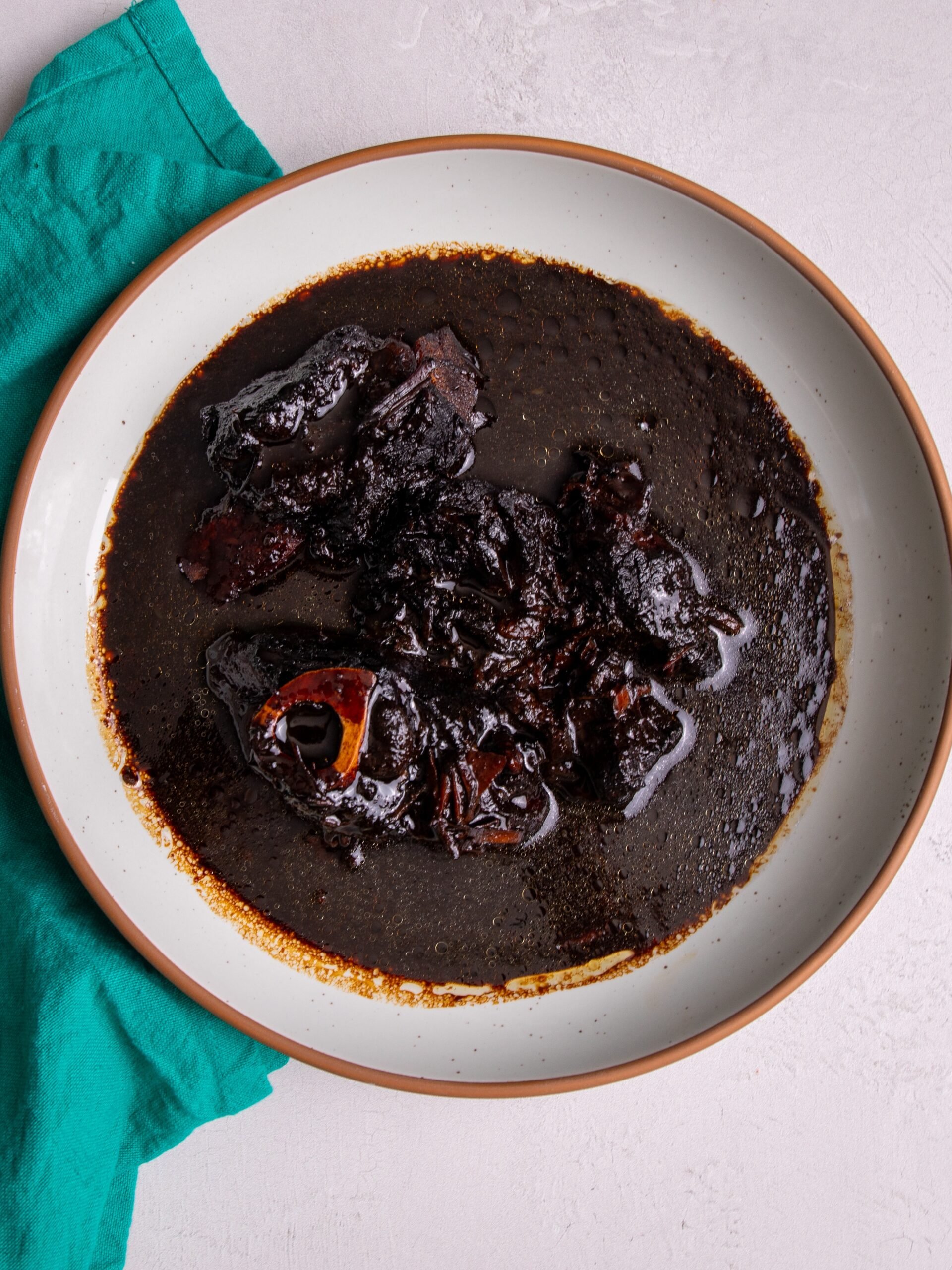
Is cassareep safe to eat?
Yes, as long as it has been properly processed. Boil the cassava liquid thoroughly before consuming it, as raw cassava juice contains cyanide. After prolonged boiling until it reaches a thick consistency, it is safe to use and enjoy.
What does cassareep taste like?
Cassareep has a deep, tangy with a touch of bitterness. Its complex taste profile enhances the dishes it is used in, particularly stews and braised meats.
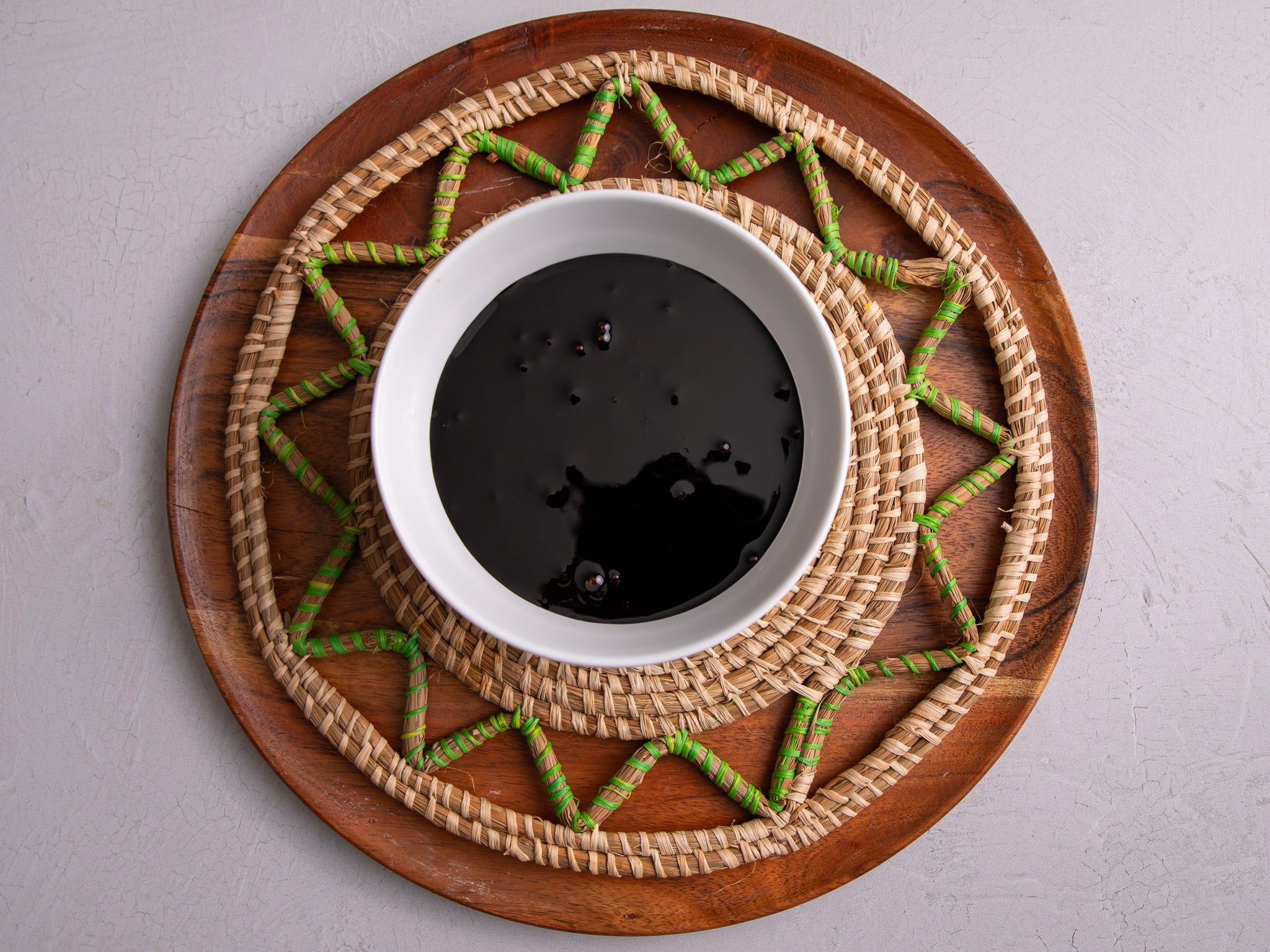
Ingredients for Cassareep
It takes lots of cassava to make a small batch of cassareep. You can make it at home using grated cassava but be warned that the cassava available in stores is sweet cassava and not the bitter cassava traditionally used in this process.
How to Make Cassareep at Home
Although most people just buy cassareep, you can make it at home. I don’t recommend doing this unless you have no other choice, as it is quite labor intensive, has a low yield and you run the risk of cyanide poisoning. But if you must, here is how it is done.
Start by peeling and grating the cassava. Next, place the grated cassava into a nut milk bag or cheesecloth and squeeze out all the juice. Let the juice sit an hour or two so the cassava starch can separate from the liquid.
Once separated, pour the cassava juice into a saucepan (and only the juice, do not add any of the starch) and heat it over medium. Bring it to a boil, stirring frequently, and let it simmer until the liquid becomes translucent and there is a visible separation between the solids and the liquid.
Allow it to cool completely then strain with a wire mesh strainer lined with a muslin cloth. Then return the liquid to a clean saucepan and bring back to a boil. Continue to boil until the liquid reduces down and becomes dark. Once it begins to darken, reduce the heat to low and continue to simmer until it thickens.
Once it thickens, remove from the heat and cool completely before transferring it to a mason jar. Store the jar in a cool, dry place—refrigeration isn’t necessary since cassareep is naturally stable and can last for years without spoiling.
Note that the amount of cassava you need for a mason jar of cassareep is about 20 lbs. Good luck!
Recipes that Use Cassareep
- Pepperpot: It provides flavor but also preserves the meat. It will keep it at room temperature for days without spoiling.
- Guyanese Beef Patties: This enriches the beef filling of the patties for a deeper flavor.
- Veggies: Sometimes I add this thick sauce to my vegetable stir-fries. Try it in Green Beans and Shrimp and Bora & Sweet Potatoes.
- Brown Stew Chicken: Use it as a substitute for coconut aminos in my recipe.
- Rice: Add the syrup to your Cook-Up Rice for a rich, bittersweet taste. It also deepens the hue of the meat for better presentation.
- Stew: Use to enrich the flavor of stews like Beef Stew and Chicken and Potato Stew, providing a distinctive and savory touch.
Storage
You can store pure cassareep in an airtight container in a cool, dry place for several years. While some opt to refrigerate it, it is naturally stable and does not require refrigeration.
Tips
- Use 100% cassava extract. For the most authentic flavor, choose cassareep which is 100% cassava extract with no additives. Commercial brands often include burnt sugar or spices that can dilute the flavor.
- Allow the juice to rest. If making your own, the cassava juice needs to rest for about an hour to allow the starch to separate from the liquid.
- Boil thoroughly. When making cassareep at home, thoroughly boil the cassava juice to remove any potential toxins. Reducing the juice to a thick syrup can take anywhere from 4 to 6 hours of continuous boiling, depending on the volume and heat intensity. Once it has reduced to a thick syrup, it’s safe and ready to use.
- Store it in a cool, dry place away from direct sunlight. While refrigeration is not necessary, proper storage helps maintain its quality and extends its shelf life.
Frequently Asked Questions
Pure cassareep has a long shelf life and can last several years if stored properly. When mixed with other additives it should be treated like other cooking sauces. Follow instructions on the jar for storage and when to discard.
Cassareep has a unique flavor, so choose a substitute based on your desired outcome. For similar color and sweetness, use burnt sugar or coconut aminos. Alternatively, a combination of soy sauce and brown sugar can replicate the depth and slight sweetness.
I prefer a cassareep that is 100% cassava extract for my pepperpot. This gives a deep, rich flavor and the signature dark color pepperpot is known for.

Cassareep
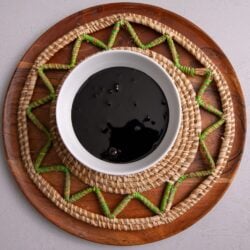
Equipment
- Grater
- Cheesecloth
- Saucepan
- Mason jar
Ingredients
- 20 lbs Cassava
Instructions
- Peel and grate the cassava. Then add the grated cassava to a nut milk bag or cheesecloth and squeeze until all of the juice is extracted. Then let the juice rest for 1-2 hours to separate from the cassava starch.
- Add the cassava juice to a saucepan, taking care not to add any of the starch. Then add the saucepan to medium heat and bring to a boil. Continue to boil, stirring often, until the liquid becomes translucent with visible solids floating around.
- Remove from the heat and allow the liquid to cool completely then strain off the solids using a mesh strainer lined with a muslin cloth. Return the liquid to a clean saucepan, then bring to a boil. Boil until the liquid darkens (about an hour), then reduce the heat to low and continue to boil until it is a dark and thick liquid. Allow to cool completely before pouring into a mason jar and storing in a cool, dry place.
- Some people store cassareep in the refrigerator but that is not necessary. It is self stable and can sit in the pantry for several years without growing mold or going bad.
Notes
The information listed in the recipe card is an estimate provided by an online nutrition tool. The tool evaluates ingredient names and amounts then makes calculations based on the number of servings listed for the recipe. It is provided as a general guideline and not as a precise calculation. For precise nutrition information please feel free to add the ingredients to your preferred nutrition calculator or consult a doctor or licensed nutritionist.


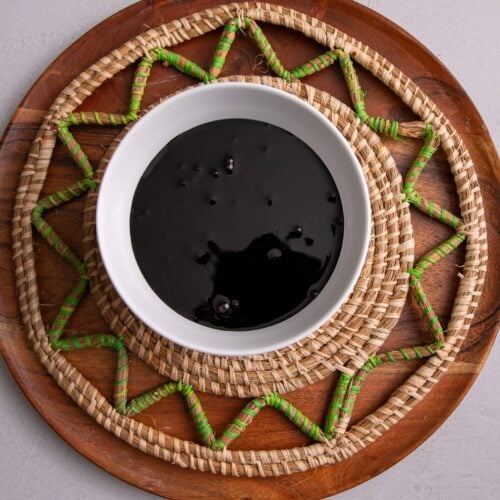

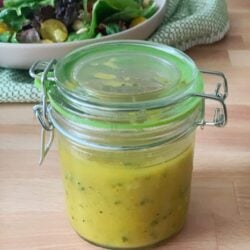 Tangy Mango Vinaigrette {Whole30, Paleo, Vegan}
Tangy Mango Vinaigrette {Whole30, Paleo, Vegan}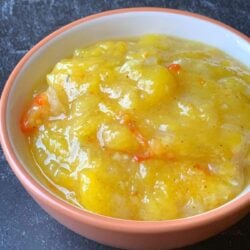 Instant Pot Mango Sour
Instant Pot Mango Sour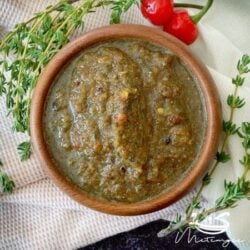 Jerk Seasoning (Whole30, Paleo)
Jerk Seasoning (Whole30, Paleo)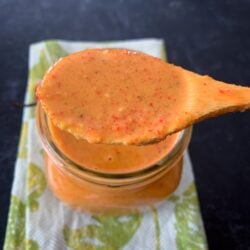 Guyanese Hot Pepper Sauce
Guyanese Hot Pepper Sauce
Elena Says
Wow 😮 what an interesting read…! Thank you for sharing your adventures and recipes… I enjoyed reading on this bright Sunday morn; and now I will attempt to make one of your luscious brunch…without cassareep!! 😃
Shelly Says
Thanks for the history of Guyanese cuisine.
Rocky Obie Says
Thank you kindly! 💛